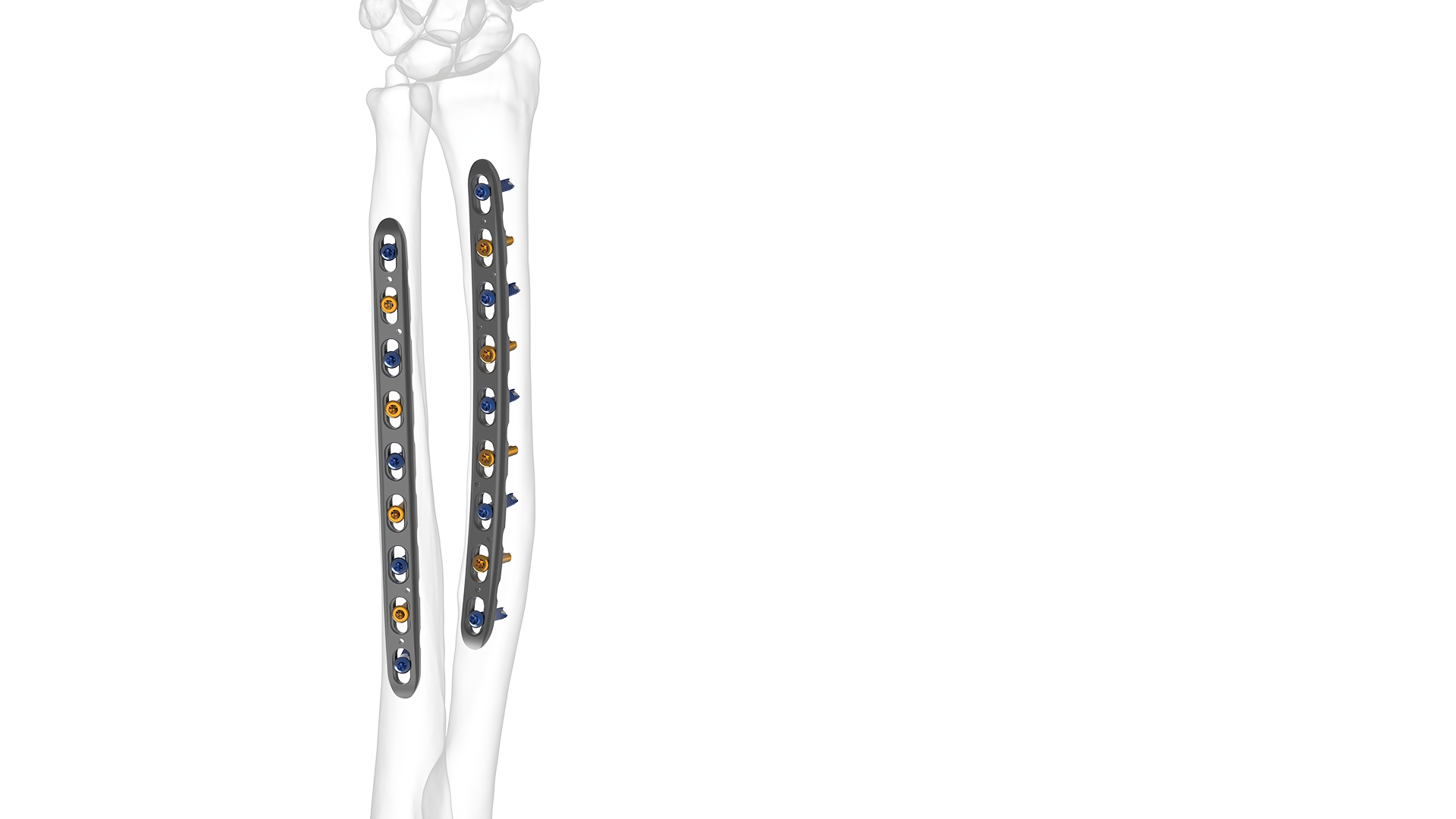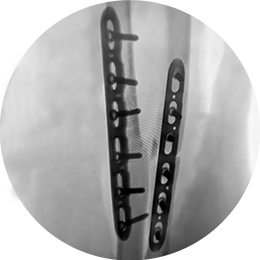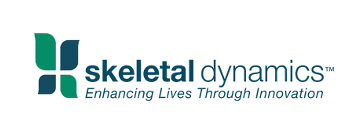

FREEFIX® FOREARM PLATING SYSTEM
Features
- Both compression and locking screws
- Horizontal thread pattern to allow dynamic compression (1.5mm available in each screw slot)
- Callomimetic design mimics callus formation
Forearm Plating System Design
The system contains bone plates designed for the repair of midshaft fractures in the ulna and radius. It can also be used to treat fusions and osteotomies. Forearm plating does this through bone fixation(osteosynthesis) and fracture reduction. Locking plates in the system stabilize the fracture site, allowing the bones to reknit in the correct position. The plates’ shape allows stress to be unloaded evenly across the bone.
The FREEFIX design gets its name from the fact that compression and locking screws can be inserted in any slot position. This allows the system to be tailored to the patient’s anatomy. This is aided by the wide range of plate lengths included in the system.
The FREEFIX Forearm Plating System includes:
- Titanium midshaft ulna and radius plates ranging from 81mm to 188mm long (eight of each plate are provided)
- Specialist instrumentation (fragment bone clamp, drill guide, tissue protector, depth gauge, drill bits)
- Stainless steel k-wires for provisional fixation
To reduce the risk of the heterotopic bone formation, surgeons must take two separate approaches. Although this is only necessary when both the radius and ulna require fixation. The anterior approach is often used in proximal radial shaft fractures for example. For mid or distal radial shaft fractures, either the anterior or posterolateral approach can be used. This practice can also reduce the risk of soft tissue damage.
INTERESTED IN FREEFIX Forearm Plating System
If you would like more information regarding Skeletal Dynamics’ Forearm Plating System.
Interested in the FREEFIX® FOREARM PLATING SYSTEM?

Surgical Materials
The FREEFIX Forearm Plating System uses a titanium alloy primarily because it’s strong and corrosion resistant. It also has good hard-tissue compatibility. This is an essential quality for bone formation and bone bonding. The radius and ulna are not load bearing bones, so the lightweight quality of titanium is another plus.
Cobalt chromium is used as plate screws due to their high strength and stiffness. The temperature and wear resistance of the material also makes in beneficial for implantation.
The system’s stainless steel k-wires are seen across Skeletal Dynamics’ range. The reasons for this material are twofold. First, it has a high modulus of elasticity. This is ideal for achieving accurate fixation in fracture care constructs. Secondly, stainless steel is easy to clean which is why it commonly sees use in surgical equipment.


Founded in 2007 by Dr Jorge Orbay, MD, Skeletal Dynamics set out to provide innovative, science-based solutions to solve and understand the clinical challenges of upper extremity surgery and unmet clinical needs. Skeletal Dynamics is the only medical device company that is 100% solely focused on the upper extremities. Distributors of Skeletal Dynamics are selected based on individual integrity, industry experience and clinical knowledge and LEDA is proud to be the leading UK orthopaedic distributor for Skeletal Dynamic products including:
Frequently Asked Questions
The first is injury due to forearm trauma, one of the common causes of which is a fall. This can result in sprain, dislocation, strain, fracture, and/or ligament damage. The nature of the injury will depend on the degree of trauma.
Secondly, people can often sustain forearm injury through overuse. This usually occurs in sports that use repetitive motion, such as weightlifting, tennis and golf. Many office-based roles will also put stress on forearm muscles over time.
Along with the two causes of forearm injury above, surgeons should be aware of arthritis and carpal tunnel syndrome.
Even fractures that can be treated non-surgically will include a cast as part of the rehabilitation process. Cast stabilization is combined with exercises to improve range of motion. For fixation surgery, postoperative immobilization treatment using a cast will typically be prescribed for 2-6 weeks. This is merely to aid natural bone repair and as such, casting is indicated by patient bone condition and stability.
Typically, rods or screws are used to repair bones that make up a joint. Plates on the other hand, are designed to compress long bones and allow injuries to heal.

